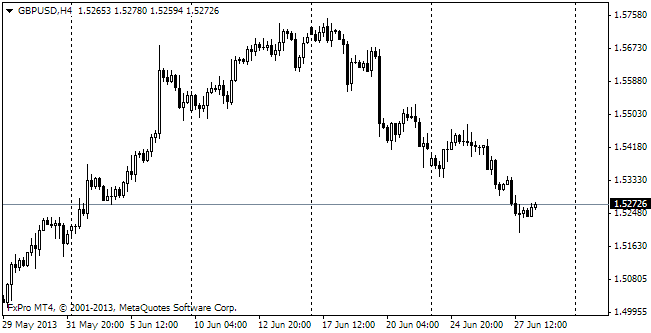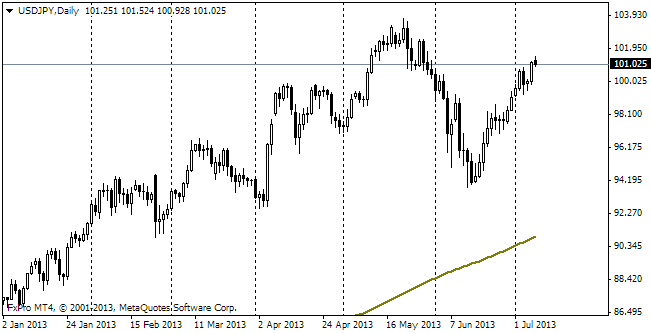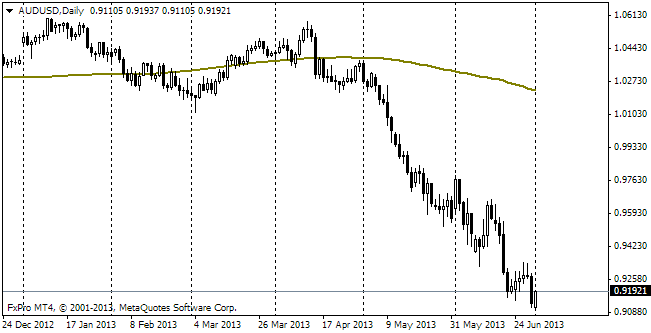EUR/usd
It's not easy to characterize the market reaction when there are neither economic nor news releases. Monday was one of such days. Anyway, there were some things happening under the surface. Risk aversion at the end of trading in the USA provoked falling of stock indices down to the lows since the beginning of September. It is remarkable that the correlation between stock indices and currency markets has completely disappeared. EURUSD is living its own life – yesterday it hit the low of 1.3542, but soon returned to 1.3570 and was trading there for the most part of the day. Those who stick to fundamental analysis have only to wait for the movement in one or the other direction (depending on the viewpoint). At the same time, for fans of graphic analysis comes the time when the uptrend of the euro against the dollar, which dominated in September, can either be proven or broken. Now the pair has come close to the support of the trend and the movement below 1.3540 will be significant. Our stance here is the following: we believe that should the situation in the USA be resolved, it will strengthen the dollar, but all the time which politicians will spend on negotiations the dollar will naturally be falling as the public sector workers on leave (about 800K) will produce immediate influence on the economy and as an indirect consequence other US households, worried about the political conflict, will be cautious. In pretty much the same way, cuts in governmental financing are pernicious to all corporations and also affect business activity. The political crisis may also indirectly influence the Fed, causing new doubts about the curtailment of the bond-buying programme. However, at present we see nothing like that. The government bond market is standing aside, preferring to react to changes in the CB's policy rather than to political peripeties. The yield of 10yr bonds has fallen to 2.60% and holds tightly to this level as if it were glued to it. It is affected by two opposite forces at once – capital outflow from the US securities and stakes on slower economic growth.

GBP/USD
Yesterday the sterling tried to make a bounce and thus correct Friday's decline, but today bearish forces again put pressure on the currency. The pound failed to catch hold of 1.6100 and is now again at 1.6070. As has already been mentioned, the pair has no correlation with the euro's performance, so the political crisis in the USA will not necessarily be in favour of the British currency. To predict the performance it is much more important to understand how the economy is doing and how steady the growth, which dominated last summer, will be.

USD/JPY
For the first time for almost a year the pair has hit its 200-day MA (96.70). This is connected with the series of the descending highs since the end of May, but also with the troubles in the USA, which force investors to be cautious. In our opinion, the current levels are attractive for medium-term purchases, but we also don't exclude that due to the mess in the US politics fresh lows will be hit.

AUD/USD
Gradually improving its positions, the Australian dollar has risen to 0.9450 by now. With an exception of two days in September these levels are the highest ones since June. The aussie is one of those, which benefit from uncertainty in the developed countries, attracting attention of the developing ones, getting reserve diversification flows.
